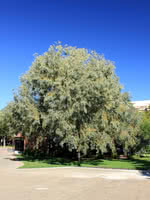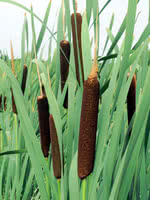Mon-Fri 9am - 5pm Mountain time
Golden Willow vs Common Cattail
Salix alba vitellina
Typha latifolia
CUSTOM GROW
Golden Willow is an attractive accent tree that's perfectly suited for those moist or wet areas on your property.
This fast growing tree has glossy narrow leaves that turn gold in fall, furrowed brown bark and showy gold branches that especially stand out in the winter.
Golden Willow is commonly used for windbreaks, shelterbelts, and ornamental planting. In addition to looking great, Golden Willow attracts a variety of birds and mammals with its twigs and buds.
All willow are important to native pollinators each spring as they have higher amounts of pollen and nectar early each growing season when other food sources are scarce.
Note: do not plant near buildings or buried services.
Cattail is found all across North America, growing next to water. Like other waterside plants, Cattail provides erosion control and forage for animals.
It is suitable for land reclamation. Cattail is able to tolerate cold weather and occasional flooding.
Golden Willow Quick Facts
Common Cattail Quick Facts
In row spacing: 2.4 - 3 m (8 - 10 ft)

